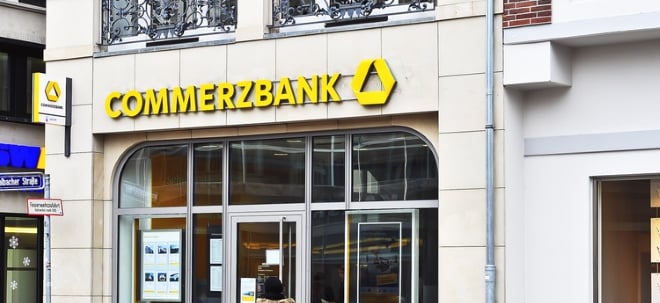RARE Submits BLA to the FDA for Sanfilippo Syndrome Gene Therapy
Ultragenyx Pharmaceutical RARE announced that it has submitted a biologics license application (BLA) to the FDA for its UX111 (ABO-102) AAV gene therapy as a treatment for patients with Sanfilippo syndrome type A (MPS IIIA) under the accelerated approval pathway.Earlier this year, the FDA aligned with Ultragenyx, after a thorough evaluation, on the use of cerebral spinal fluid (CSF) heparan sulfate (HS) as a well-characterized biomarker to support an accelerated approval pathway for mucopolysaccharidoses (MPS) disorders, including Sanfilippo syndrome. Ultragenyx’s BLA submission for UX111 is backed by data, including findings from the ongoing, pivotal phase I/II/III Transpher A study. Results show that treatment with UX111 led to a rapid and lasting reduction in HS levels in the CSF of patients with MPS IIIA. Additionally, maintaining lower CSF HS levels over time was linked to improved long-term cognitive development, contrasting with the decline observed in natural history data. The investigational gene therapy was overall well-tolerated in the study. Adverse events related to treatment with the candidate were mostly mild to moderate in severity.In the past three months, shares of RARE have plunged 24.5% compared with the industry’s 12.8% decline.Image Source: Zacks Investment ResearchSubject to approval, UX111 will become the first FDA-approved therapy for MPS IIIA in the United States. MPS IIIA is a rare fatal lysosomal storage disease that primarily affects the brain. Per Ultragenyx, approximately 3,000 to 5,000 patients in commercially accessible geographies are affected by this disease, with a median life expectancy of 15 years. UX111 was added to RARE’s pipeline following an exclusive license agreement with Abeona Therapeutics in 2022.The investigational gene therapy enjoys the Regenerative Medicine Advanced Therapy, Fast Track, Rare Pediatric Disease and Orphan Drug designations in the United States. In the EU, it has been granted the PRIME and Orphan Medicinal Product designations.RARE Initiates Phase III Angelman Syndrome Study for GTX-102In a separate press release, Ultragenyx announced that it has dosed the first patient in the pivotal phase III Aspire study evaluating the efficacy and safety of GTX-102, its investigational antisense oligonucleotide, for Angelman syndrome (AS). Per RARE, the 48-week Aspire study will enroll around 120 AS patients, aged four to 17, with a genetically confirmed diagnosis of full maternal UBE3A gene deletion. The enrolled population will then be randomized equally to either receive GTX-102 by intrathecal injection via lumbar puncture, or to the sham comparator group.Children enrolled in the treatment group will receive three monthly 8 mg loading doses of GTX-102, followed by a maintenance phase with up to 14 mg doses quarterly. Those in the sham comparator group can switch to treatment after completing the initial study duration. Per RARE, this dosing strategy has been previously confirmed by the data from the phase I/II study of the candidate for the AS indication.The primary endpoint of the Aspire study is the improvement in cognition assessed by the Bayley-4 cognitive raw score and the key secondary endpoint will be the Multi-domain Responder Index across the five domains of cognition, receptive communication, behavior, gross motor function and sleep.Ultragenyx is also on track to initiate an open-label clinical study, named Aurora, to evaluate the safety and efficacy of GTX-102 for treating other AS genotypes in other patient age groups in 2025. This additional study aims to enable treatment for a broader range of AS patients.AS is a rare neuro-genetic disorder that affects cognitive and motor function, making walking, communicating and performing daily activities more difficult, which takes a serious toll on the quality of life of the patients suffering from it.Other Key Clinical Programs in RARE’s PipelineUltragenyx has several other interesting gene therapy candidates in its pipeline. RARE and its partner, Mereo BioPharma, are jointly developing UX143 (setrusumab) monoclonal antibody forpediatric and young adult patients with osteogenesis imperfecta (OI) in two late-stage studies, Orbit and Cosmic. In October, the FDA granted the Breakthrough Therapy designation to UX143 for the OI indication.The company is also evaluating UX701, an investigational AAV9 gene therapy, in a phase I/II/III Cyprus2+ study to treat Wilson disease. Earlier this year, Ultragenyx announced that the phase III GlucoGene study (NCT05139316), evaluating its investigational AAV8 gene therapy, DTX401, to treat glycogen storage disease type Ia patients aged eight years and older achieved its primary endpoint with statistical significance. The GlucoGene study also met its key secondary endpoints. The next step for the company involves discussing these results with regulatory authorities to support a marketing application in 2025.Ultragenyx Pharmaceutical Inc. Price and Consensus Ultragenyx Pharmaceutical Inc. price-consensus-chart | Ultragenyx Pharmaceutical Inc. QuoteRARE’s Zacks Rank & Stocks to ConsiderUltragenyx currently carries a Zacks Rank #3 (Hold).Some better-ranked stocks from the sector are Castle Biosciences CSTL, CytomX Therapeutics CTMX and Spero Therapeutics SPRO, each sporting a Zacks Rank #1 (Strong Buy) at present. You can see the complete list of today’s Zacks #1 Rank stocks here.In the past 60 days, 2024 estimates for Castle Biosciences have improved from a loss of 59 cents per share to earnings of 34 cents. During the same timeframe, loss per share estimates for 2025 have narrowed from $2.15 to $1.84. In the past three months, shares of Castle Biosciences have lost 9.6%.CSTL’s earnings beat estimates in each of the trailing four quarters, delivering an average surprise of 172.72%.In the past 60 days, estimates for CytomX Therapeutics’ 2024 loss per share have narrowed from 29 cents to 5 cents. Estimates for 2025 loss per share have narrowed from 56 cents to 35 cents during the same timeframe. In the past three months, CTMX stock has lost 4.3%.CytomX’s earnings beat estimates in two of the trailing four quarters and missed the mark in the other two, delivering an average surprise of 115.70%.In the past 60 days, estimates for Spero Therapeutics’ 2024 loss per share have narrowed from $1.59 to $1.29. Estimates for 2025 loss per share have narrowed from $1.54 to 79 cents during the same timeframe. In the past three months, Spero’s shares have lost 23.2%.SPRO’s earnings beat estimates in two of the trailing four quarters and missed the mark in the other two, delivering an average surprise of 94.42%.Zacks Names #1 Semiconductor StockIt's only 1/9,000th the size of NVIDIA which skyrocketed more than +800% since we recommended it. NVIDIA is still strong, but our new top chip stock has much more room to boom.With strong earnings growth and an expanding customer base, it's positioned to feed the rampant demand for Artificial Intelligence, Machine Learning, and Internet of Things. Global semiconductor manufacturing is projected to explode from $452 billion in 2021 to $803 billion by 2028.See This Stock Now for Free >>Want the latest recommendations from Zacks Investment Research? Today, you can download 7 Best Stocks for the Next 30 Days. Click to get this free report Ultragenyx Pharmaceutical Inc. (RARE): Free Stock Analysis Report CytomX Therapeutics, Inc. (CTMX): Free Stock Analysis Report Spero Therapeutics, Inc. (SPRO): Free Stock Analysis Report Castle Biosciences, Inc. (CSTL): Free Stock Analysis ReportTo read this article on Zacks.com click here.Zacks Investment ResearchWeiter zum vollständigen Artikel bei Zacks
Quelle: Zacks
Nachrichten zu Rare Holdings Ltd.
Keine Nachrichten im Zeitraum eines Jahres in dieser Kategorie verfügbar.
Eventuell finden Sie Nachrichten, die älter als ein Jahr sind, im Archiv
Analysen zu Rare Holdings Ltd.
Keine Analysen gefunden.

